#Paranormal Activity: The Marked Ones
Explore tagged Tumblr posts
Text

1 note
·
View note
Text
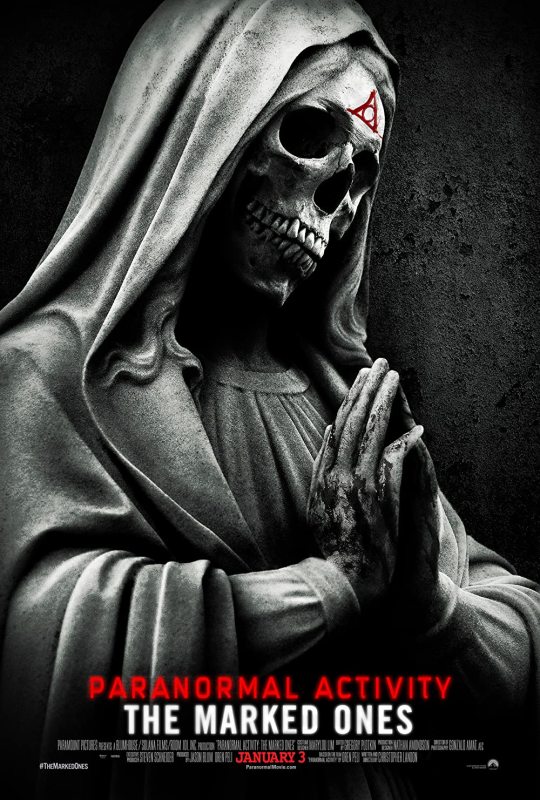
Paranormal Activity: The Marked Ones: Directed by Christopher Landon. With Andrew Jacobs, Jorge Diaz, Gabrielle Walsh, Renee Victor. When a young man becomes the target of a malevolent entity, he must uncover its true intentions before it takes complete control of him.
0 notes
Text
All Paranormal Activity Films (1-7)
Paranormal Activity 1-4 - SAFE
Paranormal Activity: The Marked Ones - SAFE
Paranormal Activity: The Ghost Dimension - NOT SAFE. Graphic v* scene during the exorcism when everything seems fine you can see it coming she v* into the camera (because it was filmed for 3D). I watched it and if I remember it was green because of the night vision. (Between 1h and 1h 17m not exact but just after you think the exorcism is over)
Paranormal Activity: Next of Kin - SAFE
#submission#paranormal activity#Paranormal Activity: The Marked Ones#Paranormal Activity: The Ghost Dimension#Paranormal Activity: Next of Kin
1 note
·
View note
Text




Paranormal Activity: The Marked Ones (2014) dir. Christopher Landon
#paranormal activity the marked ones#paranormal activity#paranormalactivityedit#horroredit#userhorroredits#filmedit#filmgifs#userbrittany#userrobin#doyouevenfilm#fyeahmovies#useremory#dailyflicks#userrlaura#usersugar#usersavana#userbeckett#useraurore#usercy#userhayf#goryhorroor#usergal#userlera#usercrumb#userhavva#userscary#gifs#kane52630#10s
563 notes
·
View notes
Text
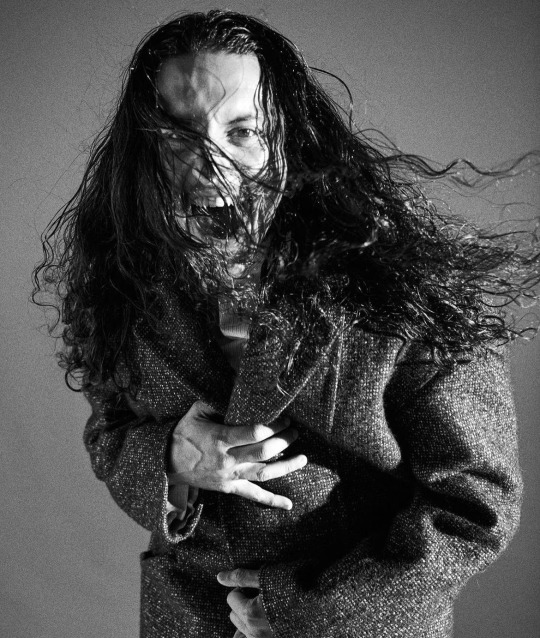


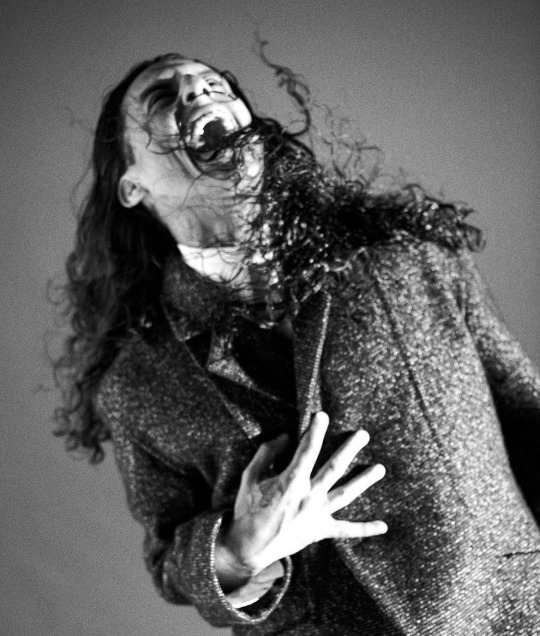
Richard Cabral for Man About Town
#richard cabral#mayans#mayans mc#coco#coco cruz#twisted metal#loud#paranormal activity#end of watch#american crime#lethal weapon#paranormal activity the marked ones#man about town#magazine#editorial
106 notes
·
View notes
Text
#horror#horror film#horror film poll#horror poll#poll#horror movie#horror movie poll#movie#film#film poll#movie poll#paranormal activity franchise#pa#pa franchise#paranormal activity#paranormal activity 2#paranormal activity 3#paranormal activity 4#paranormal activity the marked ones#paranormal activity the ghost dimension#paranormal activity tokyo night#paranormal activity next of kin
16 notes
·
View notes
Text
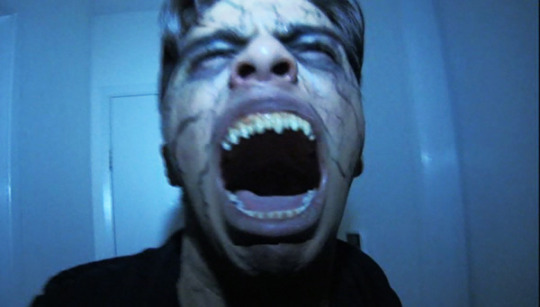
SUMMARY: After their friend is found murdered, a group of highschoolers find themselves in the middle of haunting supernatural events, threatening to take one of them with a terrifying paranormal entity.
mod chris loves paranormal activity and will watch this one with joy.
#paranormal activity the marked ones (2014)#paranormal activity franchise#supernatural horror#ghost#possession horror#found footage#2010s#united states#north american movie#horror#movie#poll
21 notes
·
View notes
Text
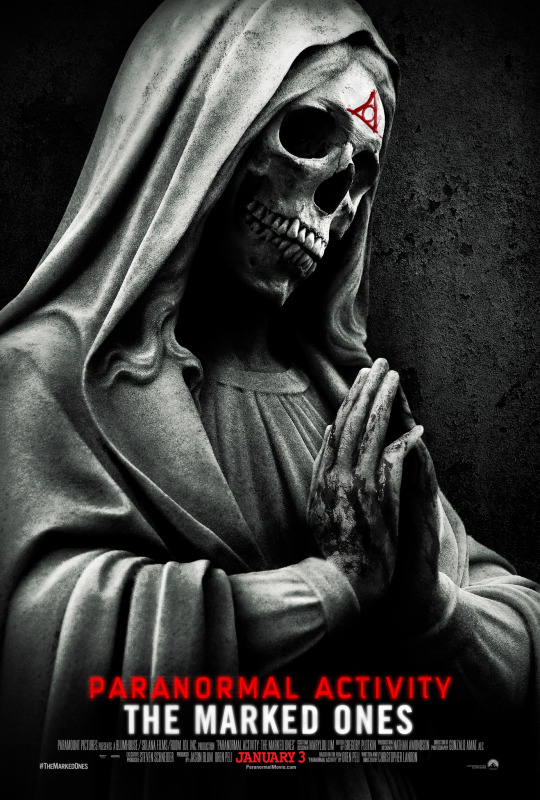
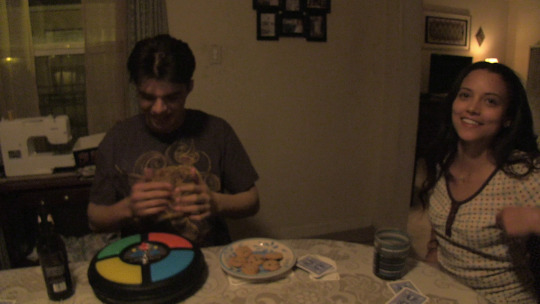


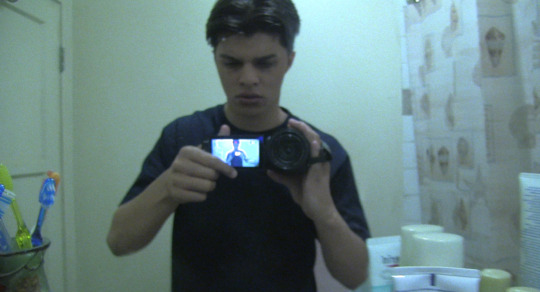
Paranormal Activity: The Marked Ones (2014)
What can I say, it's another Paranormal Activity movie. Aside from a change of location that feels like a transparent attempt to appeal to a different demographic, it's basically more of the same. I will say that this one has more actual story than the previous four combined, but it's just thrown at you in the same incoherent style that the series is known for. It's an unfortunate situation where if you have seen the other movies it just feels incredibly derivative of those, but if you haven't then the significance of most of the lore—and especially the ending—will be completely lost on you.
4/10
#hauntings#found footage#2010s#horror#horror movies#2010s horror#ghost movies#paranormal activity#paranormal activity the marked ones#4/10
12 notes
·
View notes
Text
I dunno about you but when I'm near a secluded community that starts doing violent animal sacrifices and I find a church full of blood. Idk. I'd get the hell out of there.
#just girly girl things i guess#so i guess asmodeus fell in love with a girl named Sarah? and now is haunting all of her descendants? i guess???#idk like the first three movies made sense#and i liked the one about the marked ones but like. . . this ones a little. . . odd#paranormal activity#next of kin#spoilers
2 notes
·
View notes
Text
Paranormal Activity: The Marked Ones is about how white women feel they have the ownership of Brown and Black bodies in this essay I will
#horror movies#paranormal activity#paranormal activity the marked ones#just trust me on this#Abuela Irma KNEW okay#she’s the hero of the franchise
3 notes
·
View notes
Text
the first paranormal activity movie was scary bc it had the "it could've happened to you. it still could happen to you. are you brave enough to sleep with the lights out? is your house yours or do you belong to this house or something so sinister you couldn't see it in your worst nightmare?" factor which was amazing. the second and third one took that fear off bc the haunting/possession was linked to a family BUT the fear was replaced with "what if your family was also fucked up and someone made a deal with demon but you was never aware of it because that's not exactly the thing you'd talk about during family dinners? what if you were cursed bc someone in my family was greedy enough to sacrifice you even before i was born?". the ghost dimension however lifted both of those fears off to replace it with "oooh scary dark shadow thing just hanging around in a very specific house linked directly to the first haunting/possession. the child is becoming possessed in such a way it could have been an early season supernatural episode. scary shadow thing and scary little girl in a white nightgown ooooooo so scary so terrifying are you shaking in your boots yet or is another jumpscare necessary?" which was well. pissing on the whole franchise with a movie with plot so dense yet so disconnected to the main storylines it could've been a standalone movie not linked to ANY horror movie franchise and that separation, in my opinion, could've saved the whole thing
#paranormal activity has been taking a lot of space in my brain lately but i'm finally drunk enough to post about it here#the 3 first movies and the marked ones are sooo fun and i love them but the ghost dimension and next of kin were well. tiring#however i found next of kin interesting bc instead of scary foreigners it had scary Amish community and to me Amish are rather usa thing#anyways going to bed love u i hope this make sense and you understand what i'm saying#gadanie żaby
5 notes
·
View notes
Text

Hmmmmmm…
#On the one hand he did make Paranormal Activity: The Marked Ones which is secretly the best movie in that franchise#On the other he leans REALLY hard into the comedy angle when doing horror-comedies#He does have a screenwriting background though so hopefully the script will be a lot tighter than VI’s was#Scream VII#Scream 7#Scream
6 notes
·
View notes
Text
The Franchise Files - Paranormal Activity - The Conclusion.
So after watching almost 9 hours of Paranormal Activity movies, what are my thoughts? Well, if we pretend Next of Kin doesn’t exist, this is a pretty decent franchise. We stick with the same cult/coven and demon throughout all 6 movies. We get new characters every time, but the overarching story stays the same. The story itself has a very clear beginning, middle and end. The films just weren’t…

View On WordPress
#Amazon Prime#Blumhouse#Found footage horror#Found footage horror review#Horror#Horror franchise review#Horror Lamb#Horror Movie Review#horror movies#horror review#movie reviews#movies#Next of Kin#Paramount Pictures#Paranormal Activity#Paranormal Activity franchise#Paranormal activity review#reviews#Solana#The Franchise Files#The Ghost dimension#The Marked Ones
0 notes
Text



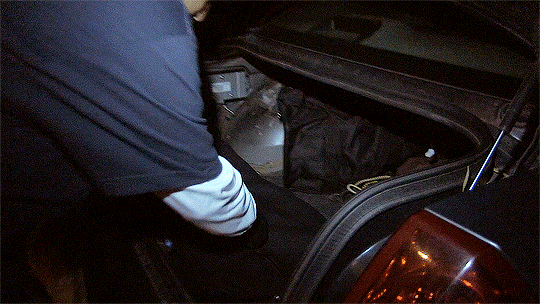




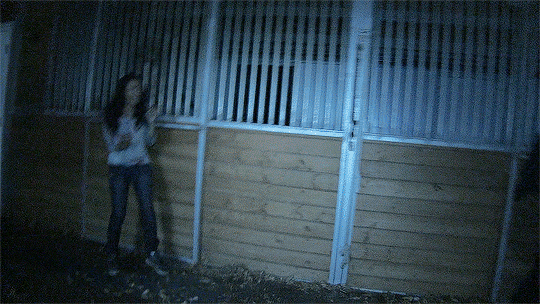

Paranormal Activity: The Marked Ones (2014) dir. Christopher Landon
#paranormal activity the marked ones#paranormal activity#paranormalactivityedit#horroredit#userhorroredits#filmedit#filmgifs#userbrittany#userrobin#doyouevenfilm#fyeahmovies#useremory#dailyflicks#userrlaura#usersugar#usersavana#userbeckett#useraurore#usercy#userhayf#goryhorroor#usergal#userlera#usercrumb#userhavva#userscary#gifs#kane52630#10s
301 notes
·
View notes
Text
♱ 𝐁𝐮𝐢𝐥𝐝 𝐆𝐨𝐝, 𝐓𝐡𝐞𝐧 𝐖𝐞’𝐥𝐥 𝐓𝐚𝐥𝐤 ♱
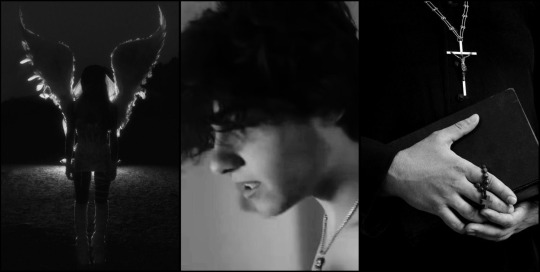
Pt.01 Pt.02
IN WHICH…A virgin meets the new priest of her church, Father Matt, and her world of all things holy begins to crumble.
WARNINGS… NSFW AHEAD! Religious figures, god is mentioned, Demons, religious abuse, mentions of exorcisms, paranormal activity, making out, fingering, blow jobs, pillow humping, breath play, cum eating, rough sex, virginity mentioned, voyeurism, masturbation, blood, orgasms, death, innocent/nieve!reader, asshole!matt. IF I MISSED ANYTHING PLEASE LET ME KNOW!!!
APOLOGIZING NOW TO ANYONE WHO IS SUPER RELIGIOUS! THIS IS NOT MEANT TO DISRESPECT ANYONE, I JUST GOT THE IDEA FROM OTHER SMUTS I'VE READ, THE SONG BY PATD!, AND THE MOVIE MOTHER!
This is a long one, like I'm talking 5k sum words. I hope y'all enjoy.

The dark.
It was something many people, both children and adults alike feared
Nyctophobia.
They hated not being able to see their surroundings correctly, to see the color in their life. They hated being alone in what seemed to be an endless descent into a void.
Y/n was the same..
She hated the dark, always has.
However it wasn't the dark that necessarily scared her, it was the fact she knew she wasn't alone in the dark.
When she was younger, she had imaginary friends, they were her only friends. During the day they were nice to her, playing tag with her outside, and holding fun conversations about rainbows and unicorns, but as it got closer to dusk,
They began to change.
Their faces would sink in, and they'd start making clicking noises and whispering. They would creep around her home and tell her to do bad things. She'd beg them to stop, fat tears rolling down her cheeks as she did so.
They wouldn't listen, instead they'd get violent.
When nighttime fell, they would grab her feet in bed, attempting to drag her off the safety of her mattress. They would scratch at the walls, screaming as their talons left marks along the pink wallpaper.
She'd curl into a ball, tears rolling down her face as she prayed for god to stop them, but god didn't listen. Her prayers only seemed to enrage her imaginary friends, their screams getting louder as their actions became more violent.
But the only time they'd stop was at 3 AM.
Their screams would suddenly stop, their violent actions coming to an end.
And it was always because of Matt.
He was a ghastly pale boy, his skin being a stark contrast to her warm soft brown skin. He had a round face and sandy brown hair, his blue eyes were piercing.
And he always had a smile on his face.
He'd crawl into bed with the young girl, wrapping his small arms around her and whispering in her ear.
"It's ok Y/n, you'll understand eventually."
She was confused by his words, not understanding what he was talking about. But she never had time to dwell upon it, her eyes falling shut as sleep overtook her.
She was always able to fall asleep quickly when Matt was there,
He was comforting...He was her savior.
But that was yanked away when her parents held her first communion, crowning the girl a child of god and letting her consume the blood and body of Christ.
Her imaginary friends no longer appeared, Matt was gone.
Oddly, she missed it, the nights in which she used to fear and learned to love were taken away in the blink of an eye and she hated it. She would tell her parents how she missed Matt, how she missed the conversations they held at night.
To say her parents were frightened would be an understatement. They accused her of being promiscuous when she didn't even know what promiscuous meant.
They accused her of being friends with the devil.
Instead of just understanding she was a child with an active imagination,
They locked her in the hallway closet.
They wouldn't let her out for a week, ignoring her screams and pleas to be let out.
She was scared, hurt, confused...She didn't understand why she was being punished this way.
So when she was dragged inside her home, soaking wet from the storm outside, and her mother opened the closet,
She lost it.
She screamed as loud as she could, kicking, screaming, and fighting for them not to lock her in that closet again.
"Please! I'm sorry, it won't happen again!" She pleads helplessly to her father. Her glossy eyes stared into her fathers deep and stern ones, hoping he would have a change of heart.
He didn't.
Her body fell backward as he shoved her into the small space, her head hitting a shelf. Ignoring the pain in the back of her head, she scrambled forward, attempting to stop them from closing the door...But it was no use.
The door slammed shut, trapping her in the dark.
Her fists banged against the door, her screams raw and ear-piercing as she begged them to be let out.
but they don't listen.
Her screams eventually come to a stop, turning into soft and raspy whimpers, still pleading for forgiveness under her breath.
They ignored her, giving each other a look before heading to their bedroom to hopefully get some sleep.
A few hours had gone by, and Y/n managed to curl into a ball on the floor, her fingers dancing in the sliver of light casting from the hallway underneath the door.
Her eyes were dead, her throat sore from all the screaming and shouting she was doing earlier.
Suddenly, she feels a presence.
She tense, her fingers stopping all movement.
She thought that it was one of her parents coming to let her out of the closet, but that thought was thrown out when she heard a clicking noise.
The same clicking noise from her childhood.
She scrambles to sit up, her back touching the door as the hairs on her neck stand up.
Her eyes dart around in the darkness, her pupils straining, trying to find what she was looking for.
But she couldn’t see, it was dark.
Her breathing is harsh, her chest rising and falling rapidly as she tries to figure out if her mind is playing tricks on her. She comes to the conclusion that she was in fact hallucinating, and tries to calm down, but that changes in a split second.
The clicking noise happens a centimeter away from her ear.
She lets out an ear-piercing scream, throwing herself further away from whatever was trapped in the closet with her.
It happens so quickly, the clicking noises and screaming multiplying.
She's instantly brought back to all the times she would lay in bed at a young age, screaming for her imaginary friends to stop torturing her.
"Stop it! Please stop! Let me out!" She sobs.
She curled into a ball, her hands over her ears as her eyes clenched shut.
She looked like a child, a scared child.
The screaming and clicking goes on forever, day and night, not that she could tell the time.
All sense of time had been thrown out the window.
She doesn't know how long she was in the closet, the door never opening until eventually,
It did.
The screams stop immediately, the quietness seeming so loud.
Y/n opens her eyes, blinking profusely as she adjusts to the light she hasn’t seen in days.
Once they do finally adjust, she sees a hand outstretched toward her. She follows the limb upward and her eyes land on Matt.
Her savior.
He has a warm and welcoming look on his face, contradictory to the shadows standing behind him.
“It’s ok Angel-” He voices softly as he sees her frightened eyes and splotchy cheeks.
“Take my hand,” He urges.
Hesitantly, the girl takes his hand, no longer wanting to be in the closet. As she rises to her feet her legs begin to shake, weak from being trapped in the closet with nothing to eat or drink besides a single water bottle and a loaf of bread.
Matt wraps an arm around her waist, a neutral expression on his face as he supports her shaking frame.
“Look at you, so weak and scared. They had you in there for six days.” He coos.
Suddenly her parents appear, making her flinch back in fright. She was scared they were going to put her in the closet again, trapping her with the demons.
“Did you do what I asked?” Matt questions with a straight voice. Both adults nod, their eyes casted on traumatized Y/n.
“Yes, Father…They are in your car.”
Matt hums in thanks and looks down at Y/n, “let’s go Angel.”
Her parents watch as she’s pulled out of the home, mumbling a prayer to themselves that their daughter be saved, and whatever demon inside her banished so she can live a full life.
Matt opens the passenger side door, helping her get situated in the car before walking over to the driver's side.
His eyes land on her parents standing by the door.
As they hold eye contact, they can’t help but feel a chill run down their spine. They watch as an eerie smirk makes its way onto the Father’s face.
Matt watches as her parents are yanked backward, the front door slamming shut.
He chuckles and settles into the car, starting the engine and pulling off down the street.
Y/n sits quietly in the car, her eyes dull and face grim.
Matt side-eyes her but says nothing, continuing the drive to their destination. Midway through the drive, he reaches into the backseat and places a brown paper bag in her lap.
“Eat. You need the energy.”
Y/n stares down at the paper bag full of food, her stomach grumbling at the sight. However, she doesn’t dive in.
“F-for what?”
Her voice is raspy, her throat dry from all the screaming and crying she has done. She lifts her head and looks at Matt who’s already looking at her with a devious smile.
“Your exorcism.”
Her heart dropped along with her head, more tears falling from her eyes. She had completely forgotten that she was supposed to have an exorcism…She didn’t need one. There was no use in trying to beg him to listen, she figured his and everyone else’s mind was made up. Her hands shake as she begins to eat the food, the sandwich tasting rotten as she tries to wrap her head around what her life has come to.
Eventually, they pull into the lot of a rundown motel. The dim and half-lit sign read “ Cameron Motel”.
Weeds were growing all over the parking lot that had a few dirty cars parked. The building itself was baby pink with baby blue trimming that had graffiti all over it. Some of the windows were boarded up and others were broken.
She was so busy staring at the beat up building, she didn’t realize Matt had gotten out the car. She jumps when her door opens, her head turning and looking up at a stoic Matt.
“Get out of the car Angel.”
Her breath hitches but she does as told, hugging herself as she stands in front of him. He grabs her arm, and quickly drags her towards the entrance.
Despite the eerie and dark aura of the motel, she can’t help but find an appeal to it. She knew that if the building was taken care of, it would look beautiful.
Yet, she still finds herself crossing, her index and middle finger drawing a cross that catches her head and chest, to both her shoulders.
As they enter the dingy building, her nostrils immediately begin to burn with the smell of asbestos and formaldehyde.
She coughs a little as she takes in her surroundings. Just like the outside, the inside was decaying right before her eyes.
She’s taken out of her examination by a girl in her bra and underwear running past her, the girl laughing and squealing as a boy chases her in his boxers. She jumps in shock and presses herself closer to Matt, her cheeks warm from seeing the girl so exposed.
Matt ignores her obvious signs of being flustered and keeps walking.
As they walk down the dimly lit hallway, she hears all sorts of things behind closed doors.
Screaming, crying, moaning, and tv static.
The occupants of the motel seemed to have a very different outlook on life.
But who was she to judge? She was the one here for an exorcism, not them.
They approach a door at the end of the hallway, the room number reading 333. Matt pushes the door open and to Y/n's surprise, the room isn't as dirty like she thought it would be.
A king size bed sits in the middle of the room, adorned in clean white sheets. The floor is carpeted with no stains, and there is a tv sitting on a stand across the bed.
Matt gently pushes her inside the room and closes the door, throwing the bag on his arm on a nearby chair. She stands awkwardly in the middle of the room as Matt walks around. Her head is cast downward but she can see him removing his blazer.
He throws it down on the edge of the bed, soon sitting next to it and facing her. He examines her timid frame and hums to himself.
They sit in a pregnant silence before he finally speaks, "Take that bag with you into the bathroom. Get yourself ready."
She eyes the bag on the chair and finally looks back to Matt, "W-whats in there?"
"Just take the bag, and get ready," he demands. She nods and timidly grabs the bag, holding it to her chest as she makes her way into the bathroom. She sets the bag on the counter and unzips it, all her movements stopping when she sees what's inside.
She pulls out a razor and some type of women's shaving cream, shampoo and conditioner, and the final product,
A white dress with a thin pair of white satin underwear.
She takes out the white dress, holding it up by the shoulder straps, and examines it.
It looked like her usual nightgowns, except more provocative.
Her cheeks warm at the thought of seeing herself in the dress, Matt seeing her in the dress. She sets the dress down and looks back at the shaving products. She's a bit confused at the idea of shaving considering her mother and father never let her do so, telling her that children of the lord don't need to shave, and if she does shave she's a Jezebel.
But that's what she is right? That's what her father has deemed her as,
A Jezebel.
With that, she strips herself of her clothing, climbing into the shower, and cleanses herself. With never having shaved before, she takes quite a bit of time getting rid of the hair on her body, especially in other areas.
She climbs out of the shower and dries off, rubbing a vanilla-scented lotion into her skin and slipping on the dress, underwear, and knee highs.
She stares at herself in the mirror and examines herself.
Although she's exposed, looking whorish as her father would put it, she likes what she sees in the mirror. She loves the way her brown skin is a stark contrast to the white dress, and how soft and plump her skin is.
She has a glow...an Angelic glow.
She slowly turns towards the door and hesitates as she reaches for the handle. She's a nervous wreck at the idea of Matt seeing her so exposed, no one has ever seen her in such a state since she was a baby.
She debates on locking herself in the bathroom, but she knows that's not logical. With a fast-beating heart, she slowly opens the door, her left hand clutching the rosary that hangs in the valley of her breasts, tucked into her lingerie.
She steps out of the bathroom, her eyes landing on Matt who's still sitting on the edge of the bed, but now he's smoking a cigarette. He doesn't look at her, keeping his eyes on the TV that's playing nothing but static.
"F-Father?" She addresses shakily.
Matt says nothing as he stands up from the bed, walking over to the window and drawing the curtains shut.
"Sit in the middle of the bed, on your knees, palms turned upward," he demands, loosening his tie. She tenses but does as told, her heart beating wildly as she anticipates what's to come.
Matt ashes out the cigarette, throwing his tie somewhere in the room as he finally turns to her.
She watches as he looks her up and down, his eyes staying on her chest with an unrecognizable look in his eyes. She flinches when he finally makes eye contact with her, her head dropping downward almost instantly.
"What did you see?"
She looks up in confusion, not understanding the question. Matt moves to the foot of the bed, standing tall above her.
"In the closet, what did you see?"
Her breath hitches at the question, scared to tell him the truth.
As if he's reading her mind, he tells her to tell him the truth.
"I-I...S-shadows...."
Matt hums, taking a step closer to the bed. "Shadows...and what were the shadows doing?"
"Sometimes they would j-just stand quietly...staring at me. O-other times they are whispering, screaming...clicking."
Matt says nothing for a moment, staring at her with such an intense gaze she feels something in her lower abdomen. "And how long has this been going on?"
"S-since I was five... but it stopped when I was 7, when I first had the body and blood of Christ." Matt's eyes turn into slits, his posture becoming tense.
"Your parents told me about your imaginary friends, how you explained they would go bump in the night but would stop. Why and how would they stop?"
Matt's words become quick, almost as if he's excited, anticipating her answer.
"T-they would stop at 3 AM- The devil's hour." Her heart drops as he cuts her off, her eyes wide in fear.
"W-what?"
"The devil's hour, anytime between 3 and 4 AM when demons, ghosts, anything considered hellish are their most powerful. They can cross borders between realms, speak to the living, touch the living." His words hint at something, something Y/n isn't picking up.
"T-they were demons?" She whispers softly, her hands that were still facing upward shaking and beginning to sweat. Matt smiles at her, that devilish smile that she finds herself often thinking and dreaming about.
"I believe so...So tell me, why and how they would stop." He urges once more. "I um...They-they would stop when he appeared..."
"Who's he?"
"Ma-" She stops herself as her mind begins to connect the dots. The boy who she deemed her savior, the one who showed up at 3 AM and made the things that go bump in the night disappear. The boy who would cuddle her at night and hold small conversations with her.
She wasn't sure at first, but as she started to analyze his features, everything from the head down, it was the same person.
He was standing in front of her...In all his glory.
Matt's grin grows tenfold as he sees she's connecting the dots.
"Did you miss me, angel?"
She thought if she ever saw the boy she considered a friend again, she would be jumping for joy, but instead, she crawled backward towards the head of the bed.
She was scared.
Her hands shake as she covers her mouth, the reality setting in.
"Y-you're the Devil!" she accuses softly.
Matt chuckles and turns toward the mirror behind him, still holding eye contact with the frightened girl.
"Devil? No. A product of hell itself? Yes."
Y/n feels her whole world crumbling. She couldn't wrap her head around how her life had come to this, why she was the one picked for this?
What could she have done from the time she was born, to be deemed of this fate? Was this her punishment for what she had done in a past life? Was this punishment for using God's name in vain when she was younger?
"I told you when we were younger that one day you'll understand, that time is now." He grabs a bottle of wine and pours himself a glass, taking a long sip before turning around and leaning against the dresser.
"You see, your mother wanted a baby, and with your father shooting blanks, she was never able to have one. Despite calling herself a woman of god, she made a deal at the crossroads with my father, the devil himself. She was dumb, crying and begging for a child so bad, she didn't care about the repercussions that came with it."
Y/n feels as if she's going to pass out, all this information too much for her to handle.
"So she made the deal, the deal to give her little baby girl to one of the devil's sons. Me."
y/n quickly shakes her head, refusing to believe the truth. "Y-you're lying! You're a liar! She would have never done that!" She shouts, tears running down her face. she begins to pray, hoping that god will listen and make all of this stop, hoping that he will save her. Matt grows angry, throwing the glass of red wine on the floor as he crawls onto the bed. He grips her jaw tightly, getting in her face.
"Stop praying! God can't help you, he was never able to help you!" He bellows, the whole room seeming to shake. She opens her watering eyes and Matt relaxes just the smallest bit. He removes his harsh grip on her jaw and wipes her tears away.
"You're pretty when you cry Angel, so pretty."
He inches closer to her face, his breath fanning softly. " You're mine Angel, you always were-" His hand drops from her face and down to her shoulder, his fingers fiddling with the straps of her dress.
"-You know it's true, I know you feel the connection. I kept you safe when we were younger, making all the bad stop."
Her thighs tense as his other hand grazed the freshly shaved skin, his fingers dancing along the hem of the dress.
"I've only made you feel good, I showed you how good life could be in both your daydreams and at night. I broadened your mind, I gave you pleasure."
She gasps softly at his last words.
"T-that was you....My thoughts a-and the moment in the confessional?"
He nods, a soft smile on his face, "that it was. I knew you'd appreciate it, you never felt a sense of belonging following that path. You knew they were lying, sex isn't bad, touching yourself isn't bad, and reading whatever you want isn't bad. You enjoy those things, I want you to enjoy those things. I want you to be free, I can give it to you. you just have to trust me...Do you trust me?"
She comes to the conclusion that he's right, he never lied to her. he's only ever broadened her mind, gave her what she craved, lusted after.
He was her savior.
He was her god.
"Tell me you trust me Angel, grant me the access to give you freedom." she looks to her right, watching his hand toy with the thin string on her shoulder.
She doesn't know what he means by freedom, but she wants to be free. She knows there's more to life than her small town and the path of God. She wants to experience things, she wants to create memories,
She wants to live.
With dried tears on her cheeks, she looks back up at him.
"I trust you."
That's all Matt needed to hear before his lips crashed against hers, hungry and ready to devour her. Y/n is caught off guard, never having kissed anyone before. She doesn't exactly know what to do so she lets Matt take the lead.
Matt doesn't care, he knows of her innocence, and he loves it. In fact, it's a turn-on for him, knowing that he is the once who's going to ruin her.
He pulls away from the feverish kiss, trailing his lips down her jaw and to her neck. His hands rest on her waist, his knee in between her thighs and lightly rubbing against her core. He grabs her hand and places it on the tent in his pants.
He can feel her tense, he can hear her heart thumping wildly.
It drives him wild.
"You have me so worked up Angel, this is all for you. You did this." He holds her hand as he guides it in an up-and-down motion, moaning softly in her ear, expressing the effect she has on him.
It gets her hot and bothered, that tingly feeling she usually feels in between her legs when she usually thinks of Matt expanding. Matt chuckles, his lips brushing against her ear as he gently ruts into her palm.
"I can smell you Angel...you smell so sweet, delectable, divine even."
Y/n pants heavily, her body feeling electric. It felt just like her dreams, so real, intimate, right.
It felt right.
Every inch of her body that he touches feels hot, her muscles flexing at the soft yet heavy touch.
He leaves multiple hickeys along her neck and collarbone, sucking and biting at the skin in a way to claim her.
He pulls back and and yanks her towards him by her thighs, he stares down at her, appreciating how her curls fan out across the white pillows, adoring the marks he created on her body.
She was Angelic.
He pushes her legs apart and looks down, grinning wildly as he sees the wet patch in the underwear. His finger tickles her inner thighs as he takes his time getting to her core, her chest rising and falling harshly.
"When you touched yourself, did you think of me?"
He chuckles as she turns her head away from him. "I know you did, I know of everything you dreamt of. How you imagined my fingers plunging into your mess of a cunt, how you imagined my tongue lapping at your folds."
He rips the underwear off with ease, her eyes widening in shock from the action and now being exposed. She tries to close her legs but he shoves them apart.
"And my personal favorite, was me fucking you so hard, you kept begging me to keep going. Is that what you want Angel? You want me to be your God and fuck you?"
She nods sluggishly, drunk off of his erotic and intoxicating words.
She gasps softly at the foreign feeling of his fingers trailing through her folds. It was nothing like how her fingers felt, it felt better. Her eyes flutter shut as she relishes in the newfound pleasure, only for them to fly open when two fingers are slipped inside of her.
Matt instantly begins to thrust, curling the slim digits in efforts to break the girl. Her jaw drops as her eyes roll back, the lewd squelching noises make her back arch.
"You're so tight-shit- can barely move my fingers Angel. I can't wait to have you wrapped around me." He grunts out as he watches her walls clamp down on his fingers. She's already making a mess and he has barely done anything.
He takes his fingers out and smears her mess over her lips before slowly pushing them side her mouth.
“Suck.”
She does as told and sucks on his fingers, finding herself addicted to her own taste. Matt smirks and slips them out of her mouth, trailing the saliva down her chin to her chest. He wraps his fingers around the rosary and yanks it off, the beads flying all over the bed.
A metaphor for her being stripped of her innocence.
Before she can fix her lips to say something, Matt’s lips crash against hers once more. Her arms wrap around him, her eyes closed as she kisses him back as if her life depended on it.
Matt rips his button-up off, throwing it somewhere in the room before he starts to unbuckle his belt. Once he manages to take his pants off, he pulls away from the kiss and forces her on her knees, a pillow being pushed in between her legs.
He pulls his boxers down making her eyes widen in shock. She's never seen male body parts before, ever. She looks up at Matt, an unsure look in her eyes.
"Go on, put it in your mouth," he persuades, eager to finally feel her mouth on him.
"I-I- don't k-know ho- Yes you do." He cuts her off, his hand wrapped around his own member and jerking himself off. She watches with wide eyes, unintentionally grinding against the pillow in between her legs.
"Put it in your mouth, lick on it like you do your ice cream cones." Matt's mind flashes back to the park, watching her walk away from the ice cream stand licking and sucking on her vanilla cone.
He wanted to claim her that day in the park, taking her under the tree for all to see, but he couldn't, he had to wait.
Y/n hesitantly moves her head forward, giving a small kitten lick to his tip. Matt's whole body shudders, the urge to fuck her mouth too strong.
He snaps.
He fists a handful of her hair and pushes himself in her mouth, groaning loudly as she gags and chokes around him. Her eyes clenched shut as the salty tears streamed down her face. "Fuck-look at me Angel," he grunts as her throat contricts around him.
She manages to open her eyes, her tears flowing even faster.
"Keep em' open," he says beginning to bob her head up and down. She does her best to follow his orders, her mouth opened as wide as it could go. She figures out that she should breathe through her nose instead of her mouth, the air flowing into her lungs easier. However, that was short-lived when Matt pinches her nose, preventing her from breathing. Instead of bobbing her head up and down, he thrusts his hips harshly, enjoying the choking and gargling noises coming from the girl on her knees.
She tries to breathe through her mouth, but it's proven difficult with the speed at which his genitalia is abusing her throat, and yet
She loves it.
She shamelessly ruts against the pillow between her legs, chasing that euphoric feeling she felt not too long ago in the confessional. She knows if her parents saw the ludicrous acts she was performing on a male, they would have a heart attack. But she didn't care, she loved how warm she felt, how safe she felt.
She loved being used.
She looks up at Matt, watching how beautiful he looks with his head thrown back and jaw slacked. It's an image that will forever be burned inside her brain.
Suddenly his thrusts stop, a warm and salty liquid filling up her mouth. He pulls himself out of her mouth, watching as his semen leaks past her lips. Instead of telling her to swallow, he wraps a hand around her throat and kisses her.
He moans into the kiss, lapping his own fluids out of her mouth.
He lifts her back onto the bed with ease, crawling over her panting and dazed form. He settles in between her legs, already lining himself up with her clenching hole.
Y/n doesn't know what's next, she's still trying to catch her breath, but she doesn't have much time to dwell on it once Matt shoves himself inside her. A strangled yelp leaves her throat and her hand flies to his abdomen, attempting to stop him or at least slow him down.
But Matt does neither, instead, he begins to pound into her relentlessly.
"I-It b-burns!" She yelps, trying to stop his brutal pace. He ignores her cries of pain, his eyes trained on the blood seeping out of her cunt, coating his cock and painting the hem of the white lingerie adorning her body. He lets out a deep and animalistic growl, his grip on her thighs tightening at the sight.
"You love it-fuck- you love the burn. It feels so good doesn't it Angel? You love the way my cock stretches you out, the way it fills you up so good you can feel it in your lungs,"
It's as if he's warping her mind, forcing her to believe his words,
and that's because he is.
With each word he speaks, the burning pain becomes pleasurable, her eyes rolling back in ecstasy. Her arms drop to the sides of her head, her body too weak to move on its own.
Small noises and nonsensical babbles exit her throat, her mind dizzy and fogged by the pleasure she's receiving. She couldn't believe that this is what sex feels like. She couldn't understand how something so heavenly could be considered a sin when it's so euphoric.
She begs and pleads for him to give her more, to make her feel alive.
"P-please! Please please ple-Oh God!" She arches her back when a certain spot inside of her is stimulated. Matt lets out an airy laugh, his hips still driving into her at an inhuman pace,
"That's right Angel, beg for me, beg for your God."
In the height of her pleasure, she begins to feel..odd. Almost as if there are people in the room with them. She manages to focus her eyes behind Matt, and what she sees shakes her to her core.
The shadows, the shadows she has become all too familiar with are watching, watching Matt ravage her. There's a bunch of them crowding the room, their bodies blending into each other as their groans of excitement fill the room. Matt can sense her panic, watching her eyes dart around erratically.
"It's ok Angel, they have to watch," he rasps out, his movements never ending.
"Don't look at them, look at me." He demands. However, she doesn't listen. She can't pull her eyes away from the faceless shadows, captured in a trance by their dark aura.
And that's when she starts to notice other things.
The paint on the walls is peeling, deteriorating right before her eyes. The room begins to reek of death, the smell so pungent she finds it harder to breathe. Particles of dust float in the air, a hazy film coating her eyes.
The room becomes scorching hot, suffocating the girl as a thin layer of sweat covers her body.
Y/n heaves as Matt continuously ruts into her, her chest burning as it screams for oxygen. Too much is going on for her to comprehend, the world moving slowly yet spinning so fast.
Her eyes finally avert back to Matt, her mouth open as no sounds leave her mouth. She sees the eerie smile that plants itself on his face, the dark look in his eyes. If she concentrated hard enough, she could even see the small horns coming out of his head and the pointy tail swaying behind him.
She sees the truth, she sees him for what he is.
The spawn of the Devil himself.
She feels as if her soul is leaving her body, every limb and muscle vibrating. Her jaw goes slack as she feels a sharp pain in her chest, as well as a pleasurable feeling in her lower region. Her eyes roll back as her whole body shakes violently, a metallic taste coats her tastebuds as she begins to cough and sputter out blood. The red liquid stains matts face as well as the white lingerie, before eventually coming to a halt.
Matt finds himself experiencing his own release, throwing his head back as he paints her gummy walls a pearlescent white. He groans as he pulls out of her, his dick falling limp as he crawls backward off the bed. His chest rises and falls quickly as he pulls his pants up, buckling his belt.
He pants as he stares down at her lifeless body, analyzing everything about her deadly appearance. He walks over to the side of the bed, brushing one of her curls out of her face, trailing his fingers through the blood splatter on her face.
"So pretty even in death, an angel plucked of it's wings."
he scoops her up bridal style and holds her close to his chest, her arm dangling as her head is draped back. The door to the room opens, revealing a dark abyss that still holds a blinding light.
He walks over to the door looking down at the dead girl in his arms, the shadows in the room whispering amongst themselves eagerly.
"you'll rise like a phoenix from the ashes, in all its beauty. You'll gain new wings that will set you free. You'll finally be mine...My wife."
He kisses her forehead softly and walks through the threshold of the door, into the darkness.
The door slams behind him, leaving the room empty.
The dingy structure of the motel begins to shake in the wake of the door slamming. The lights begin to flicker, cracks appearing in the ceiling. it's not long before the old and moldy building crumbles in on itself, leaving no trace of Matt and Y/n, or the other tenants and their caricatures of intimacy.

AHHHHHHH ITS FINALLY DONE! IM SORRY IT TOOK SO LONG BUT WITH WHAT I LIKE TO CALL WW1 OF TUMBLR TRULY DRAINED ME AND I NEEDED A BREAK. PLZ LET ME KNOW WHAT YALL THINK AND IF YALL WOULD LIKE TO SEE MORE FICS LIKE THIS ( OBVI WITH A DIFFERENT PLOT).
𝐒𝐭𝐮𝐫𝐧𝐢𝐨𝐥𝐨 𝐓𝐚𝐠𝐥𝐢𝐬𝐭 🍑: @mattslolita @thenickgirl @guccifrog @luverboychris @zayyluvz @mrsmiagreer @chrisssluttywaist @78yaz @freshloveforthefit @3lizaluvs @mattsturniolosgirlfriend @jetaimevous @luxy-nyx @ts-is-my-spirt-animal @iihrtsturniol0 @idontexistman @katw4shereee @madisturn @starlace111 @zivall @adoreindie @imwetforyourmom @sturnsxplr-25 @sturncakez @theyluvme-2315 @moonk1ss3d @@babyalliah-777 @sturniololol @oliviasturniolo21 @ariithereyet @blahbel668
#Spotify#sturniolo triplets#chris sturniolo#chris sturniolo smut#nick sturniolo#matt sturniolo#sturniolo fanfic#christopher sturniolo#sturniolo smut#smut#matthew sturniolo#matthew sturniolo smut#christopher sturniolo smut#sturniolo x reader#chris sturniolo x you#chris sturniolo x reader#chris girl#matt sturniolo x you#matt sturniolo smut#matt sturniolo x reader#matt girl
863 notes
·
View notes
Note
Word gets out that the house you live in is haunted and at some point you a group of youngsters knocks on your door claiming to be paranormal investigators. Despite an initial attempt to resist, you allow them to conduct their thing and even be part of it. The amount of filthy messages that come out from the spirit box leave everyone blushing AND you get to hear ghost!Max’s distorted voice for the first time 🤭
~🫠
— nonnieee you left me speechless for a good five minutes when I read this 😵💫 hearing Max’s voice for the first time?!!? going insane just thinking abt it! let’s get right into it! 18+ content below.

The rumours about the house had been around for years, whispered stories of the closed-off, gated, almost mansion-like property that seemed to breathe its own secrets. But ever since you moved in, those rumours had grown louder, more absurd. Now, people swore the spirit had grown restless, more active. They claimed that shadows danced behind your curtains when you weren’t home, lights flickered ominously as people hurried along the sidewalk, and some even said they could hear faint whispers if they lingered too long near the gates.
Of course, that was far from the truth. The spirit wasn’t restless—it was curious. Not malicious, just mischievous. And definitely not the vengeful type. No, your ghost had one overwhelming trait that set it apart from all the rumors: it was insatiably, undeniably horny.
Due to those rumours, it didn’t take long before a group of overly enthusiastic self-proclaimed paranormal investigators came knocking on your door.
“Hi! Sorry to bother you,” their leader, a wiry young man with glasses too big for his face, said quickly, his grin far too eager. “We heard this house is—well, you know, haunted. And we were wondering if you’d let us conduct an investigation?”
Behind him, the group buzzed with nervous energy, clutching an array of cameras, microphones, and an unmistakable spirit box.
You blinked at them, caught off guard. “You want to… what?”
You hesitated as they explained further. Ghosty—a nickname you had given to the perverted spirit—wasn’t a big fan of visitors. But then you felt the faintest tug at the back of your shirt, almost like encouragement.
“Fine,” you sighed, stepping aside. “But if anything breaks, you’re paying for it.”
They poured into the living room, setting up their equipment with excited mumbles. You hovered nearby, arms crossed, trying to ignore the mix of curiosity and anxiety bubbling in your chest.
“All right, let’s see if we can make contact,” the leader announced, his voice hushed with excitement. He switched on the spirit box, and the device filled the room with its eerie crackle and hum, searching for frequencies.
“Is there anyone here with us?”
Static. A faint buzz. Then, the tiniest shift—a single, sharp blip of sound. The group collectively gasped, their faces lighting up with excitement.
“What’s your name?”
More static, then a distorted voice, low, rough, and accented: “Max.”
You froze, your heart pounding. His name. You’d finally heard his name. Max. After all this time calling him Ghosty and enduring his mischief, the amount of times he’s made you cum, you finally had something real to hold onto.
But before another question could be asked, the static returned, breaking into a series of fragmented words.
“…needy… wet…” His voice was distorted but understandable, his gravelly tone sending shivers down your spine.
The investigators froze, their cheeks reddening.
“Can you be more specific?”
The spirit box whined and popped before his voice came through again, clearer this time: “walking around bare…knowing I’m watching…waiting for me to touch.”
The room fell into stunned silence, every pair of eyes darting toward you.
“slut f’me…all spread…teasing,” he continued, his distorted tone evidently dripping with lust, “cumming ‘round me.”
Your knees wobbled as his words poured over you, filthy and deliberate, each one hitting its mark.
The investigators didn’t know where to look—some blushed furiously, others stared at their equipment as though willing it to malfunction.
But you barely noticed them. The sound of his voice surrounded you, wrapping around you like a tether, pulling tighter and tighter. And then, you felt him.
His cool fingers slid over your tits. You stifled a gasp as his touch lingered, circling your nipple through the fabric of your shirt until it hardened, standing out against the material.
You tried to stay still, tried not to react, but your breath hitched, your body betraying you as heat spread through your body, down to your aching, wet cunt.
The spirit box crackled once more: “desperate… can’t resist me.”
Max’s unseen hand continued its torment, teasing you mercilessly. He tugged gently at your nipple, the thin fabric doing nothing to dull the sensation
You cleared your throat, willing your voice to remain steady despite the way your body trembled. “I think that’s enough investigating,” you said, forcing a tight smile as you glanced at the group.
The leader opened his mouth to protest, but the crimson flush on his cheeks betrayed his discomfort. None of them wanted to admit what they’d heard, let alone linger in the charged atmosphere of your home. Instead, they nodded hastily and began packing their equipment, avoiding your eyes and each other’s.
The static of the spirit box faded, and with it, Max’s teasing touch and voice disappeared. You bit back a frustrated whine, your body throbbing with need as you watched the investigators stumble out the door.
“Thank you for letting us—uh, investigate,” one of them mumbled, practically sprinting down the steps as you shut the door behind them.
The silence that followed was deafening. Your chest heaved as you pressed your forehead against the wooden door, the ache between your legs unbearable.
“Max,” you whispered, your voice trembling as you finally spoke his name aloud. “Please.”
want more ghost!max? send me an ask with your filthiest thoughts and it’ll get answered during one of my dirty drabble days
#di’s dirty drabbles#ghost!max#🫠 anon#thef1diary fic#max verstappen blurb#max verstappen x you#max verstappen x reader#max verstappen fanfic#max verstappen smut#max verstappen fic#f1 one shot#f1 smut#f1 au#f1 imagine#f1 blurb#f1 fic#f1 fanfic#f1 x you
405 notes
·
View notes